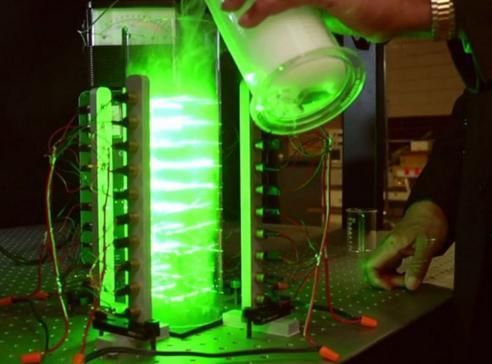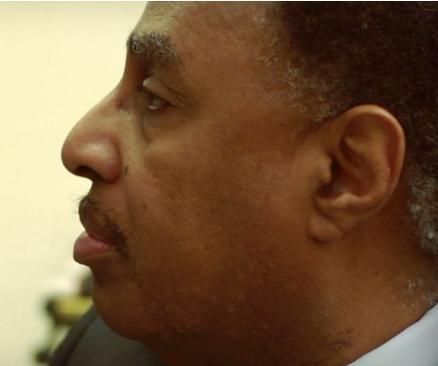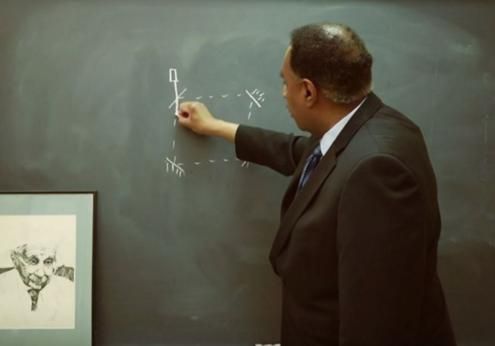An Iranian businessman claims to have mastered time with a machine that allows users to fast forward up to eight years into the future.
Have you ever wanted to see what the future will be like? One day someone somewhere could really invent a time machine that allows us to visit the future.
Can we really find out what will happen to us in eight years?
A new invention called the Aryayek time traveling machine is a created a PC-sized device that can give users 'details of the next five-eight years' of their lives.
The DeLorean time machine - no word if Ali Razeghi has used this as a template
Ali Razeghi, a Tehran scientist has registered "The Aryayek Time Traveling Machine" with the state-run Centre for Strategic Inventions.
The device can predict the future in a print out after taking readings from the touch of a user, he told the Fars state newsagency.
Razaeghi, 27, said the device worked by a set of complex algorithims to "predict five to eight years of the future life of any individual, with 98 percent accuracy".
As the managing director of Iran's Centre for Strategic Inventions, Razeghi is a serial inventor with 179 other inventions listed under his own name. "I have been working on this project for the last 10 years," he said.
"My invention easily fits into the size of a personal computer case and can predict details of the next 5-8 years of the life of its users. It will not take you into the future, it will bring the future to you."
Razeghi says Iran's government can predict the possibility of a military confrontation with a foreign country, and forecast the fluctuation in the value of foreign currencies and oil prices by using his new invention.
"Naturally a government that can see five years into the future would be able to prepare itself for challenges that might destabilise it," he said. "As such we expect to market this invention among states as well as individuals once we reach a mass production stage."
Razeghi said his latest project has been criticised by friends and relatives for "trying to play God" with ordinary lives and history. "This project is not against our religious values at all. The Americans are trying to make this invention by spending millions of dollars on it where I have already achieved it by a fraction of the cost," he said. "The reason that we are not launching our prototype at this stage is that the Chinese will steal the idea and produce it in millions overnight."
Source:By Ahmed Vahdat - 10 Apr 2013------------------------------------------------------------------------------------------------------
Note : Razeghi, who's only 27 years old (as of year 2013), has actually invented 179 other inventions in his young life. This particular time machine has been a project of his for the past 10 years. What is different with this particular machine is that it doesn't need gigawatts of electricity to use it.
Which if true, we're trusting the work of a 17-year-old kid. Whatever. I'm still down with it.
The story says Razeghi is a supervisor at Iran’s Center for Strategic Inventions and Inventors and claims that his baffling invention won’t be available for another few years, at least. “We’re waiting for conditions to improve in Iran,” Razeghi told the outlet, according to a translation by The Huffington Post.
During the interview, Razeghi refusing to give out many details because he was worried his idea would be stolen and reproduced by China. He did say, however, that his device incorporates both hardware and software components, and that it cost roughly 500,000 Iranian tomans (about $400). When asked whether he was worried the machine might cause problems, he said he envisions it used selectively, to tell a couple the future sex of their child, for example.
Neither Iran nor Razeghi have publicly responded to the report
Razegi also says that he has registered 'the Aryayek Time Traveling Machine' with the state-run Center for Strategic Inventions, but the Iranian authorities rejected the claims.
"Such a claim has not been registered in Iran's State Organization for Registration of Deeds and Properties," said Mehdinejad Nouri.
Predicting the future, even on relatively narrow issues, is a notoriously complex task. It usually requires creating an accurate computer model of a system that takes into account numerous factors, and often requires plenty of computational power. Predicting a future event in its entirety is virtually impossible with existing technology.
*******************************************************************************************






















